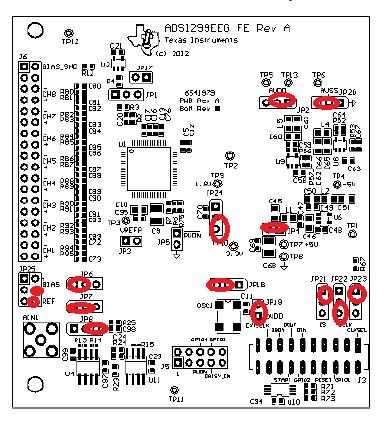Hello,
I'm a student and fairly new to this. I am under the impression that with JP6 configured as 1-2 this outputs a mid-supply voltage to BIAS_ELEC, which can be accessed on JP25 pin 4 and applied to the patient. I measured the voltage from this pin to the board's ground via a test point and read 0 Volts. It also appears to not be doing anything when I try to read single-ended inputs (which I am using the same set-up except for inputs on the channel's + pins. What am I doing wrong? Should I be sending this signal to the ADS1299 (BIASIN) instead and biasing with the output? I thought that was just another method if you'd like to set your own bias point?
Register settings are default. At this point, I just want to be able to get a bias out. When doing single-ended, I've been working with one channel and applying input to the +, and common reference through SRB1. I also noticed when I leave the inputs as open, with nothing attached, each channel has some weird bias around 0.48 V (PGA gain =1) when JP25[3-4,5-6] are connected. Is this the mid-supply? If so, it seems awfully low? I tested the voltages at each test point, and it looks good.
Thank you,
Meagan


